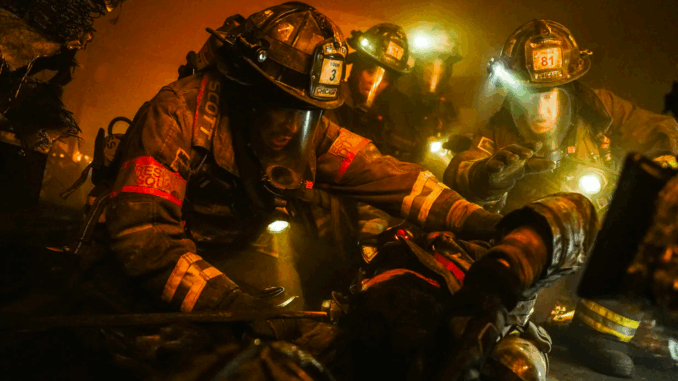
Bringing Authenticity to the Screen
Since its premiere in 2012, Chicago Fire has been praised for its realistic portrayal of the emotional and physical demands of firefighting. But what many viewers may not realize is how deeply committed the show’s creators are to authenticity. Real Chicago firefighters are consulted on everything from dialogue to the choreography of rescue scenes, ensuring that each emergency feels genuine rather than glamorized.
Actors like Taylor Kinney (Kelly Severide) and David Eigenberg (Christopher Herrmann) have trained with real-life fire departments, learning not just how to wear the heavy gear but also how to embody the mental toughness firefighters need. This behind-the-scenes commitment gives Chicago Fire its gritty realism that resonates with fans and real firefighters alike.
The Emotional Toll Few Shows Dare to Explore

Unlike many action dramas that focus solely on external danger, Chicago Fire delves into the emotional and psychological aftermath of the job. Episodes like “Real Never Waits” and “That Day” show characters grappling with survivor’s guilt, PTSD, and the pain of losing comrades.
These storylines are not just dramatic devices; they mirror the real mental health struggles within firefighting communities. By addressing these themes, Chicago Fire shines a light on a topic often overlooked in mainstream television, giving viewers a more complete picture of the profession.
How the Setting Becomes a Character Itself
Chicago is more than just a backdrop for the show—it’s a living, breathing character. From the icy winters that complicate rescues to the tight-knit communities the firefighters serve, the city’s presence shapes the narrative at every turn.
The use of real Chicago locations, rather than studio sets, enhances the show’s authenticity. Iconic neighborhoods, industrial zones, and even historic firehouses give each episode a sense of place that few other series achieve.
Redefining the Hero Archetype
In a media landscape full of lone-wolf heroes, Chicago Fire stands out by emphasizing teamwork and community. Firehouse 51 operates as a family, and their victories—and failures—are collective.
The show dismantles the traditional “hero” trope by highlighting that real bravery often means trusting your team, showing vulnerability, and making sacrifices without recognition. It’s a refreshing and much-needed redefinition of what heroism looks like today.
